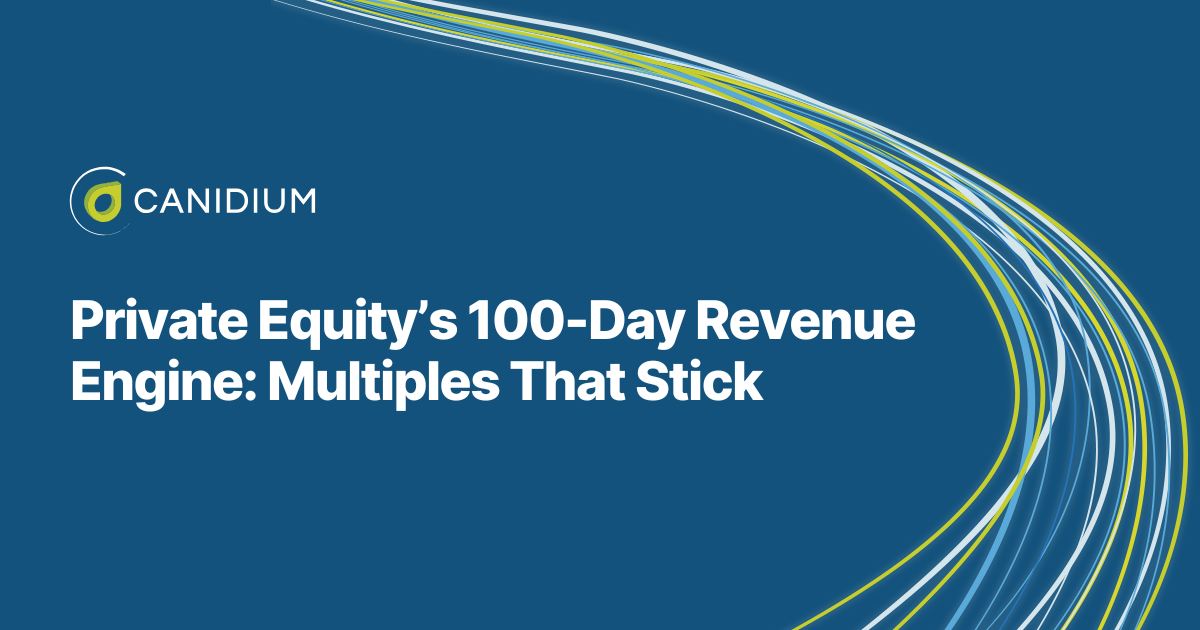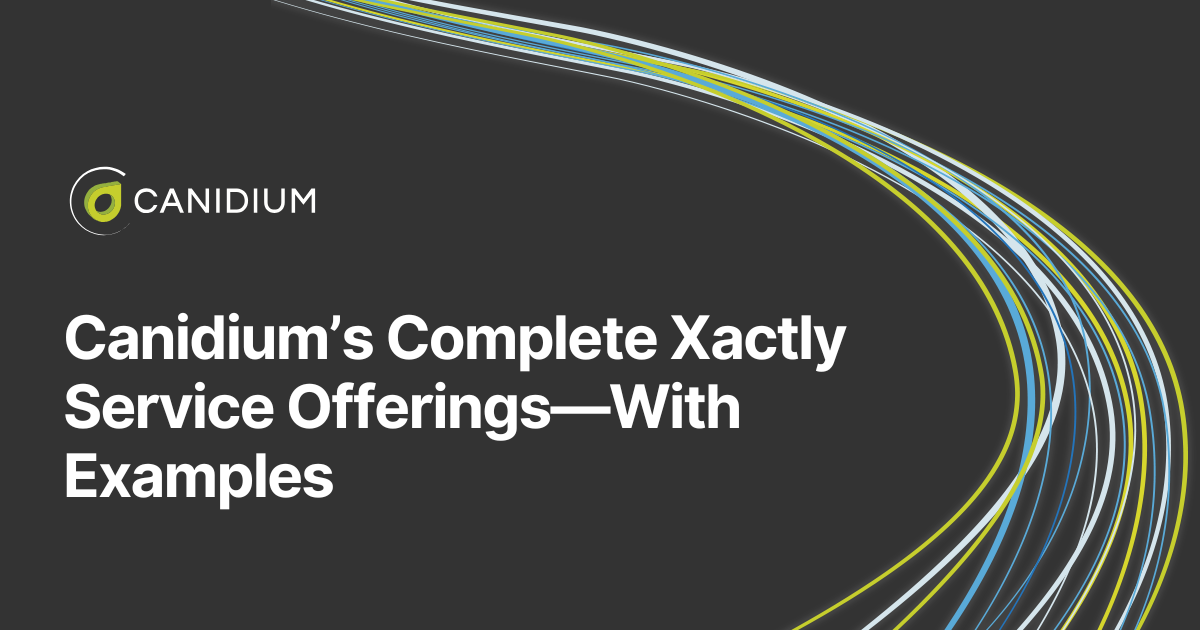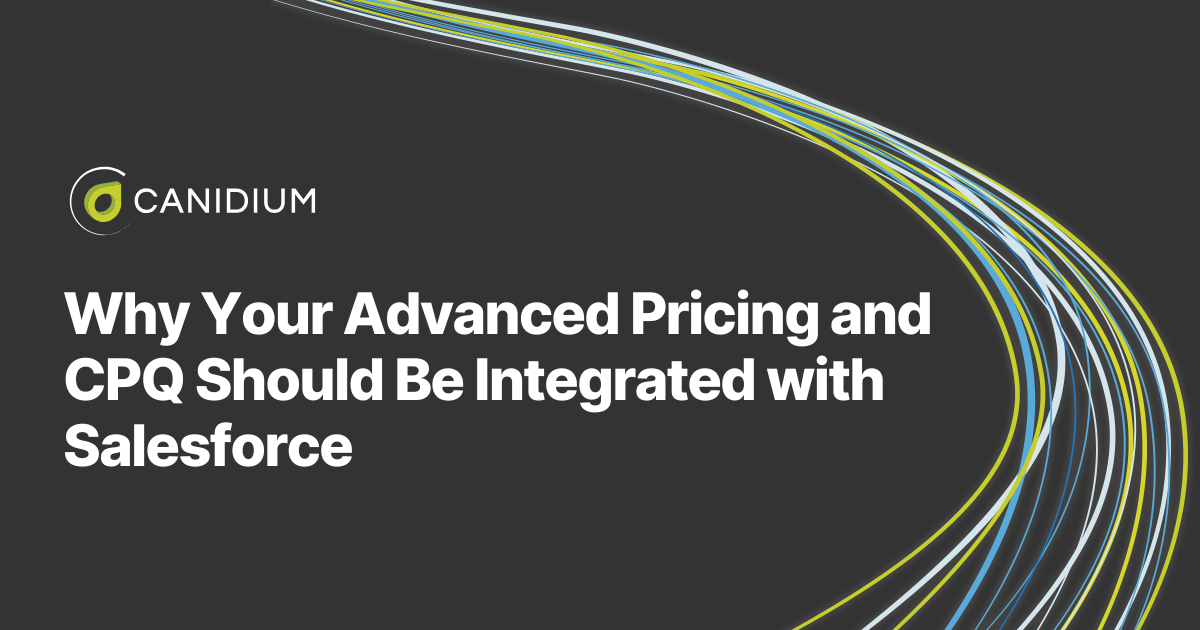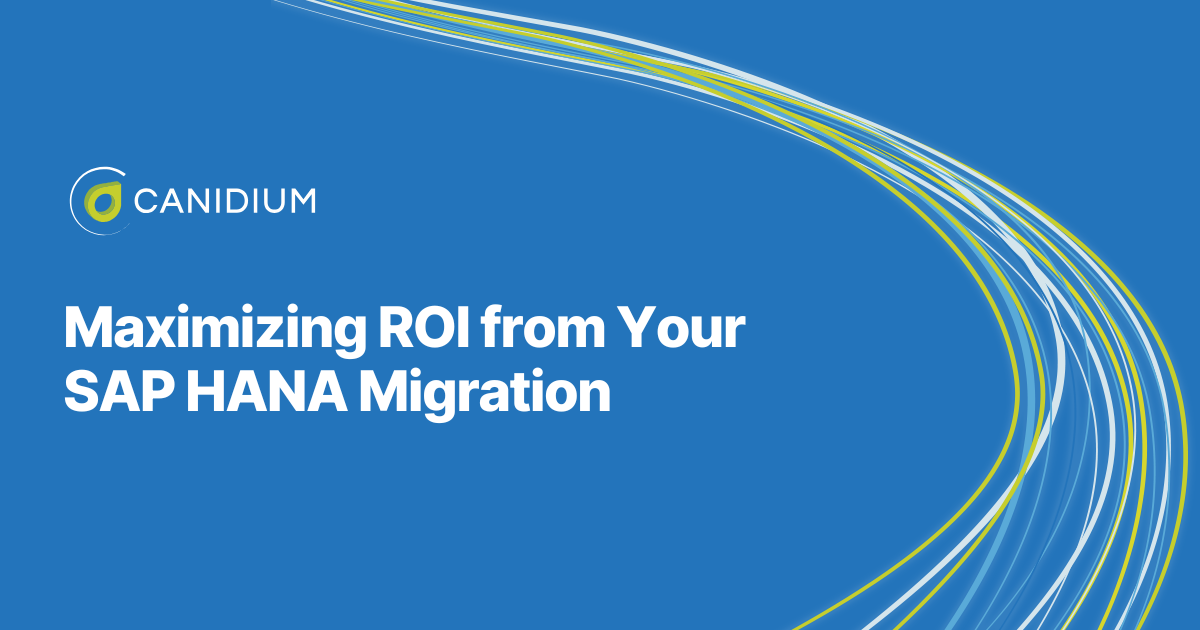Suppose your accounting department is manually calculating commissions for a large sales team. In that case, you are likely settling the costs of errors, administrative burdens, delayed payments, and compliance challenges every month. Even the best accounting team is subject to human error and limitations. These problems can be exceedingly costly at scale, potentially threatening your company's financial viability.
At Canidium, we help our clients find software solutions to commission challenges. We help them reduce their accounting costs, motivate their sales personnel, and maximize their revenue by harnessing the superhuman power of the proper digital commissions and incentive management solutions.
To help you streamline the process of finding the right accounting solution for your company, this article explores commission expense accounting (CEA) software. More specifically, we will give you an in-depth understanding of the tool to help you decide if it is the right solution for you by covering the following topics:
- What is Commission Expense Accounting (CEA) Software?
- The 5 Benefits of Using CEA and Incentive Management Software Together
- Embracing the Benefits of CEA Software
What is Commission Expense Accounting (CEA) Software?
CEA software is a specialized tool designed to manage and streamline the accounting of sales commissions within an organization. It automates the calculation, recording, and reporting of commission expenses, ensuring accuracy, compliance, and efficiency in handling one of the most complex areas of financial management.
For example, a company with a large sales team can significantly reduce manual errors and administrative overhead by automating the payment process and ensuring that sales reps receive their commissions on time. More specifically, CEA handles the total capitalization and amortization of commissions. This functionality reduces the workload on your finance team and increases the accuracy of payments.
CEA also excels in its ability to handle automatic adjustments. Consider a scenario where a contract undergoes significant changes, such as modifications in terms or changes in the sales representative's status. The software dynamically updates the commission amortization schedules, ensuring that all records reflect the latest information accurately. This capability reduces the risk of discrepancies and maintains the integrity of financial data. You can also use the pre-built reports and dashboards to analyze commission expenses, view profitability statements, and compare different accounting models.
Sophisticated CEA solutions support full and modified retrospective approaches, giving organizations flexibility in complying with ASC 606/IFRS 15 requirements. This feature is handy for companies needing to choose the most suitable compliance method based on their specific accounting practices. The tool also simplifies audit evaluations, offering granular insights into commission data at various levels, ensuring confidence in financial reporting.
According to Xactly, their CEA tool results in an 83% reduction in the amount of time needed to validate commission expense data and run reports, and CEA users can achieve 2-3 days saved in journal creation alone.
Companies often use Xactly CEA and Xactly's Commissions Earnings Forecasting tool in concert to enhance strategic decision-making. The forecasting tool can pull historical data from the CEA tool, including past commission expenses, sales figures, and performance metrics. By consolidating this data, the forecasting tool can create a comprehensive view of trends and patterns.
The 5 Benefits of Using CEA and Incentive Management Software Together
Tools like Xactly Incent and Xactly CEA provide an end-to-end solution that enhances commission management from order placement to expense reporting. This integration ensures timely and accurate compensation for sales representatives and offers significant strategic advantages for businesses.
By combining Xactly Incent's robust incentive management capabilities with the detailed financial compliance and reporting features of Xactly CEA, organizations can achieve higher efficiency, better compliance, and more insightful financial planning. This synergy helps automate complex commission calculations, adhere to stringent accounting standards, and provide comprehensive visibility into commission-related expenses.
The benefits of bundling your implementation to include both solutions are compelling to many companies. However, to understand if adding CEA to your incentive management implementation is right for you, here are its five key benefits:
.png?width=1920&height=1080&name=Project%20Life%20Cycle%205%20Stages%20(3).png)
1. Enhanced Data Visibility
A recent survey found that nearly 1 in 4 IT professionals cited a lack of data visibility as their most significant security challenge. To use your data entirely, you need the ability to review the insights buried in the otherwise unintelligible number sets.
CEA software enhances data visibility by offering real-time, detailed insights into commission expenses and financial metrics. Your finance teams can analyze data using a variety of reports and dashboards, including amortization schedules, profitability statements, and accounting model comparisons. Such detailed visibility is essential for strategic decision-making, financial planning, and accurate forecasting.
At the same time, CEA provides real-time data access, allowing stakeholders to make timely decisions and quickly respond to changes. Granular analysis at the customer, contract, or product level helps identify specific cost drivers and underperformance areas, enabling targeted improvements.
2. Lower Costs
CEA software offers a notable ROI by reducing your accounting costs. Automating commission calculations and recording eliminates manual data entry and minimizes errors, decreasing administrative overhead. Accurate and timely payouts prevent overpayments and disputes, maintaining financial control and avoiding unexpected expenses. CEA software also streamlines compliance with accounting standards to prevent noncompliance fines.
Detailed insights into commission expenses allow companies to allocate resources better, identify high-performing areas, and optimize spending. Enhanced data visibility helps identify and address financial risks early, preventing costly errors and losses. The comprehensive data analysis provided by CEA software supports informed decision-making, leading to more effective sales strategies and better financial outcomes.
Additionally, automation and efficient data management increase productivity by freeing time for finance and sales teams. More productive teams achieve better results with fewer resources, contributing to overall cost reduction.
3. Added Analytical Insights
A CEA solution can integrate data from your CRM, HRIS, CLM, and CPQ systems, offering a holistic view of your commission expenses and sales performance. Advanced reporting tools provide customizable reports such as amortization schedules and profitability statements, enabling deeper financial analysis. Real-time data access allows continuous performance monitoring and timely adjustments.
CEA software supports granular analysis at the customer, contract, and product levels, identifying specific cost drivers and areas for improvement. Predictive analytics capabilities forecast future trends based on historical data, helping organizations anticipate changes and optimize strategies. Scenario planning and simulations model various business conditions, aiding strategic decision-making.
4. Closer Team Collaboration
The real-time data access and comprehensive reporting of CEA solutions facilitate transparent communication and collaborative decision-making, as detailed dashboards and reports can be easily shared across departments. Role-based access and built-in collaboration tools enable team members to access relevant information and work together on financial planning, forecast adjustments, and performance analysis. Implementing a CEA allows you and your team to work more efficiently and cohesively.
CEA software's transparency builds trust among teams. Sales representatives can see how their commissions are calculated, and finance and HR teams can verify data accuracy. This transparency reduces misunderstandings and fosters a collaborative spirit. Additionally, cross-departmental insights allow sales teams to understand the financial impact of their performance and finance teams to gain insights into sales trends, promoting a cohesive strategy and goal alignment.
5. Reduced Regulatory Risks
Over the past two or three years, 70% of corporate risk and compliance professionals have noticed a marked shift from check-the-box compliance measures to more agile strategic approaches. This trend strongly indicates that companies should focus more on compliance planning and risk management. Moving forward, you will likely need more sophisticated tools to manage an increasingly complex regulatory environment.
By accurately calculating, recording, and reporting commission expenses, CEA software minimizes the risk of human error. It ensures that financial records are always up-to-date and compliant with regulatory requirements. It automates the tracking and documentation of commission-related transactions, creating a clear trail that simplifies compliance audits and regulatory reviews.
Dashboards enable finance teams to monitor compliance continuously and identify potential issues early, allowing timely corrective actions. Finally, CEA software supports dynamic adjustments and true-ups, automatically updating records to reflect contract changes, employee status, or other variables, ensuring ongoing compliance.
Embracing the Benefits of CEA Software
CEA software reduces manual errors and administrative overhead by automating commission calculations, recording, and reporting, benefiting companies with large sales teams. It handles commissions' full capitalization and amortization, dynamically updates records for contract changes, and maintains data integrity. CEA also provides advanced reporting tools for analyzing commission expenses, profitability, and compliance with standards like ASC 606/IFRS 15, simplifying audits and regulatory reviews.
Integrating Xactly CEA with forecasting tools further enhances strategic decision-making by consolidating historical data to predict trends. Combining Xactly Incent with CEA offers a comprehensive solution for commission management, ensuring timely and accurate compensation while providing significant strategic advantages. Enhanced data visibility from CEA allows for real-time insights, supporting better decision-making, financial planning, and risk management.
CEA software also reduces costs by automating processes, improving resource allocation, and preventing overpayments. It offers advanced analytical insights by integrating data from various systems, enabling deeper financial analysis and predictive analytics.
Understanding CEA's benefits makes it easier to determine if the solution is right for your company. Armed with this knowledge, your next step is to map out your Xactly adoption. Start by learning about the best practices for a successful internal Xactly adoption.


.png)





